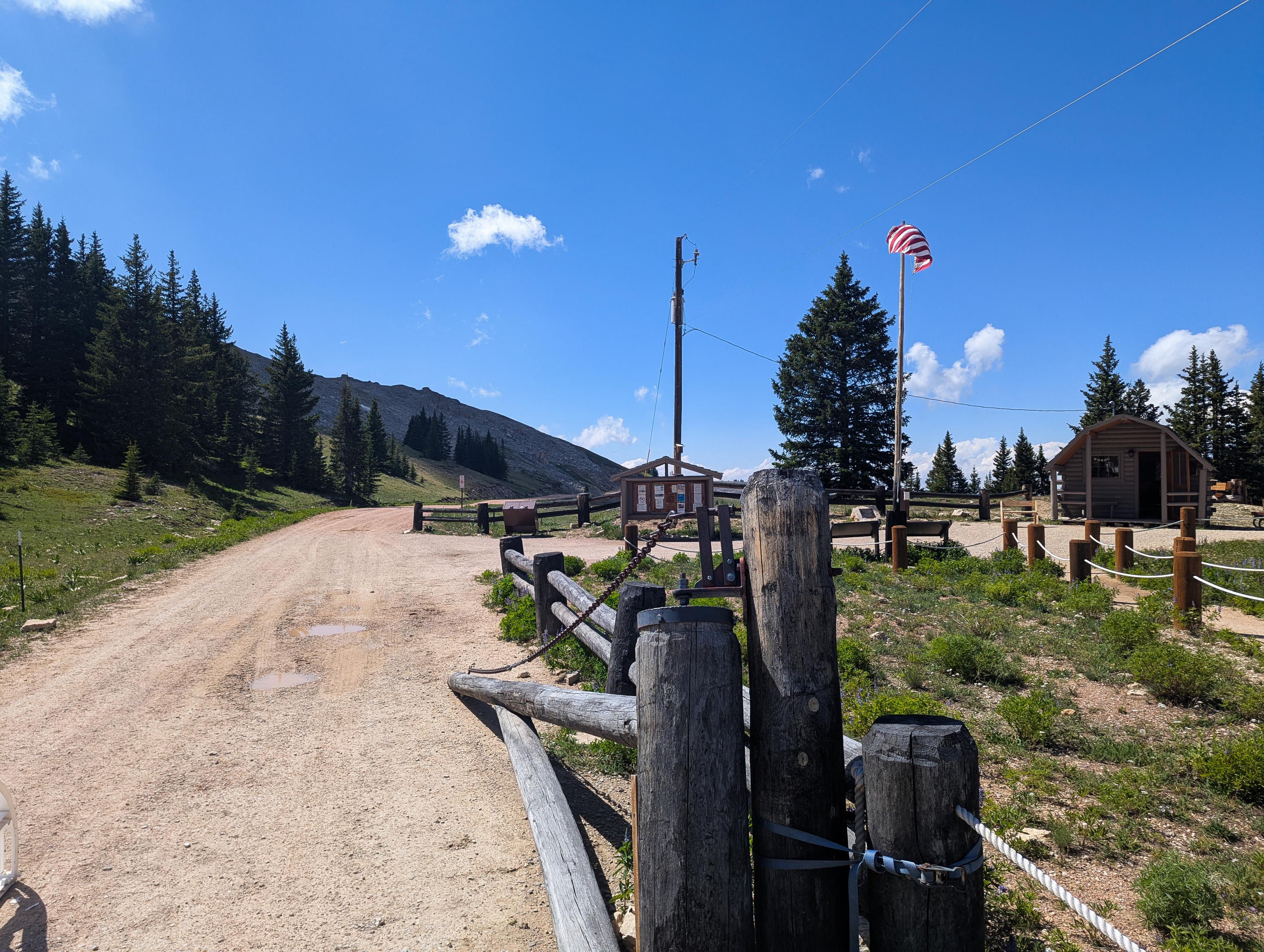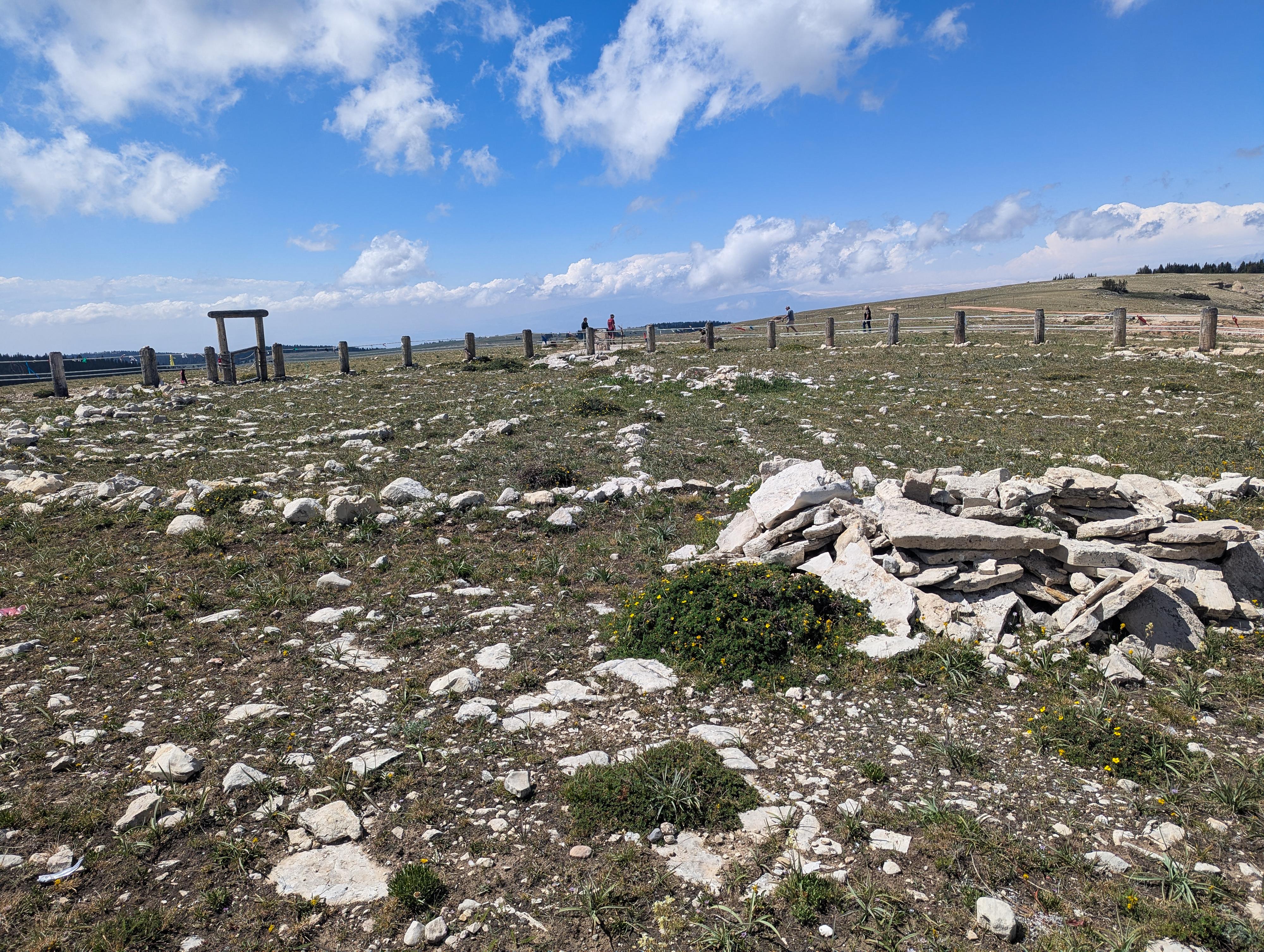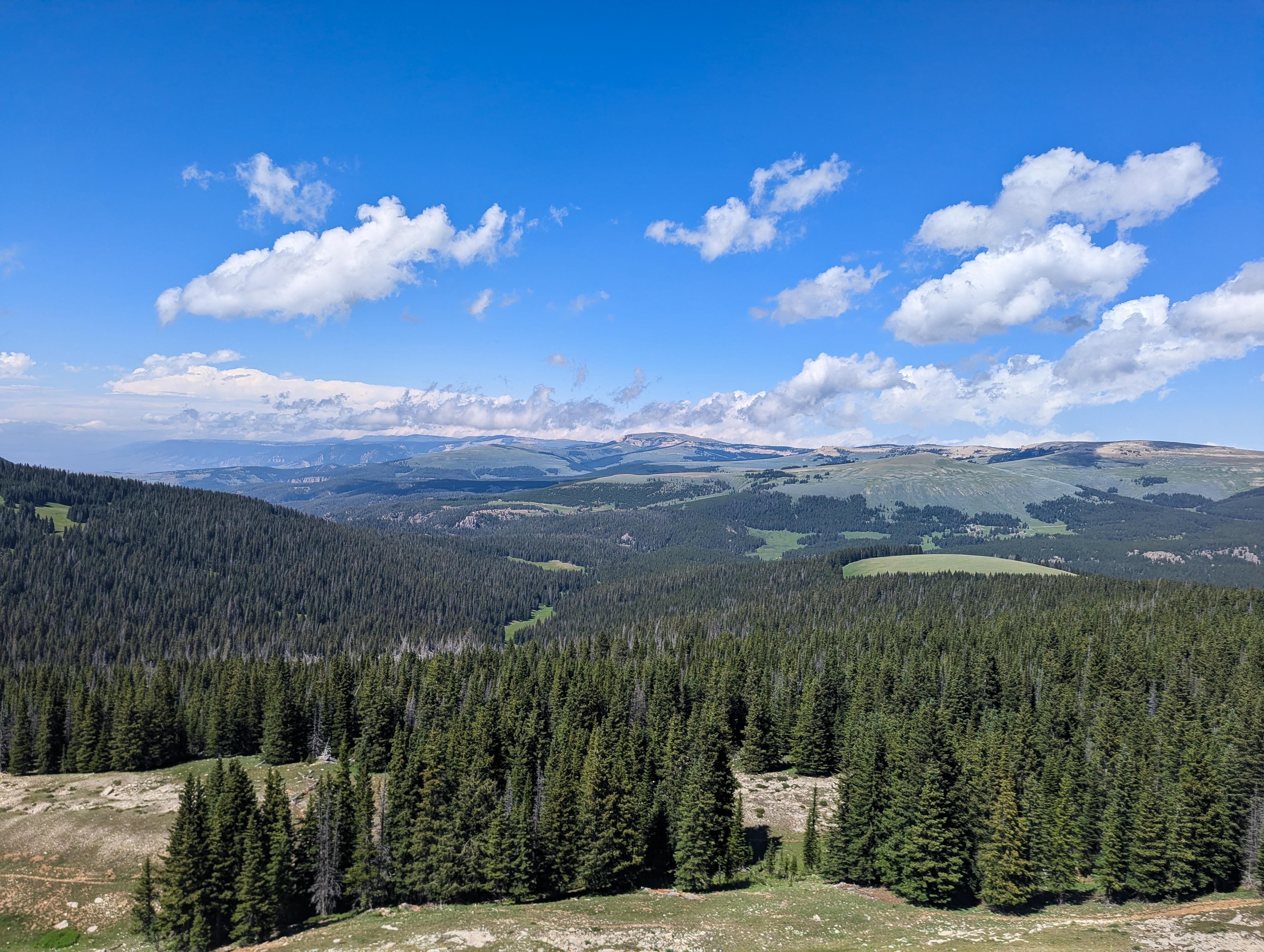 Hiking Medicine Wheel
Hiking Medicine Wheel
Bighorn Mountains
Overview
|
Tue 28 | 21 |
Wed 29 | 19 |
Thu 24 | 22 |
Fri 21 | 11 |
Sat 23 | 14 |
| View Full Weather Details | ||||
|
Tue 28 | 21 |
Wed 29 | 19 |
Thu 24 | 22 |
Fri 21 | 11 |
Sat 23 | 14 |
| View Full Weather Details | ||||
High atop the Big Horn Mountains in northern Wyoming lies one of North America's most enigmatic and sacred indigenous sites: the Medicine Wheel. This ancient structure, located at nearly 10,000 feet, consists of a central cairn connected to an outer ring by 28 radial stone spokes. Measuring roughly 80 feet across, the Medicine Wheel has long fascinated archaeologists, historians, and spiritual seekers alike. Though the exact age of the wheel is debated, carbon dating of nearby artifacts suggests it may be over 700 years old, possibly even older, with some tribal oral histories pointing to far more ancient origins.
The Medicine Wheel holds deep spiritual significance for many Native American tribes, especially the Crow, Cheyenne, Arapaho, and Lakota. These groups consider the site a place of prayer, vision quests, and celestial observation. The alignment of the stones appears to correspond with astronomical events such as the summer solstice and the rising and setting points of certain stars. For generations, Indigenous peoples have visited the site to leave offerings - such as cloth bundles, beads, and eagle feathers - making the wheel both a physical and symbolic representation of cultural continuity and connection to the cosmos.
Discovered by European Americans in the late 1800s, the Medicine Wheel became a subject of both scientific curiosity and cultural misunderstanding. Over time, however, increased collaboration between federal agencies and tribal nations has led to greater protection and respect for the site. Today, it is managed by the U.S. Forest Service in partnership with tribal representatives, and it is recognized as a National Historic Landmark. Visitors can hike to the Medicine Wheel during the summer months, where interpretive signs help explain its significance - though access is often restricted during tribal ceremonies to preserve the sacred nature of this powerful and enduring monument.
Getting There
The Medicine Wheel trailhead is off of US-14, which runs over the Bighorn Mountains from Lovell on the west side to Dayton/Sheridan on the east side.
From Lovell, head east, taking US-14 at the junction on the east side of town. Follow US-14 for 31.3 miles to a signed junction to the Medicine Wheel on the left. Follow this side road, Forest Road 12, for 1.7 miles to a large parking area and the trailhead. This last 1.7 miles is dirt road, but good dirt road that should be suitable for all vehicles.
Route
The trailhead is at a gate, small ranger shack, and restroom. After checking in with the ranger, simply follow the dirt road past the gate for 1.3 miles to the Medicine Wheel. The dirt road has some ups and downs. Be sure to bring water, as the up and down makes the distance a little longer than some may expect, especially on the way back. The views along the way are excellent.
Once at the Medicine Wheel, there is a trail that goes around the perimeter. Dogs are allowed on the hike but NOT allowed close to the Medicine Wheel or around the perimeter.
Welcome to the Medicine Wheel
A National Historic Landmark
Located on Medicine Mountain, the Medicine Wheel is one of North America’s most important and well-preserved Native American sacred landscapes which has played and continues to play an essential role in the lives of Native Americans.
How Old is the Medicine Wheel?
The Medicine Wheel is at least 250 years old, but Native Americans have occupied the region for over 12,000 years maintaining vibrant cultural practices as shown by the ancient trail system, archaeological remains and traditional use areas within this sacred landscape.
Respectful Visitors
* Please refrain from taking photos or filming during ceremonies.
* Please do not disturb the offerings left at the Medicine Wheel.
* Be respectful by quietly observing ceremonies from a distance. If it is a private ceremony, the public is requested to remain at the Five Springs overlook.
* We ask that you stay on established trails while visiting the site.
* Dogs are not permitted within or on the trail surrounding the Medicine Wheel.
Today, this site is sacred to many different tribes across North America and beyond.
Offerings tied to the rope fence or left within the wheel are from those who have made the pilgrimage to the Wheel.
On any given day a private ceremony or multiple ceremonies may be taking place.
"Eventually one gets to the Medicine Wheel to fulfill one's life."
—Old Mouse Arikara
Return the same way.
| Trailhead |
13T 270784E 4967029N 44°49'12"N 107°53'57"W |
| Medicine Wheel |
13T 269039E 4967794N 44°49'34"N 107°55'18"W |



